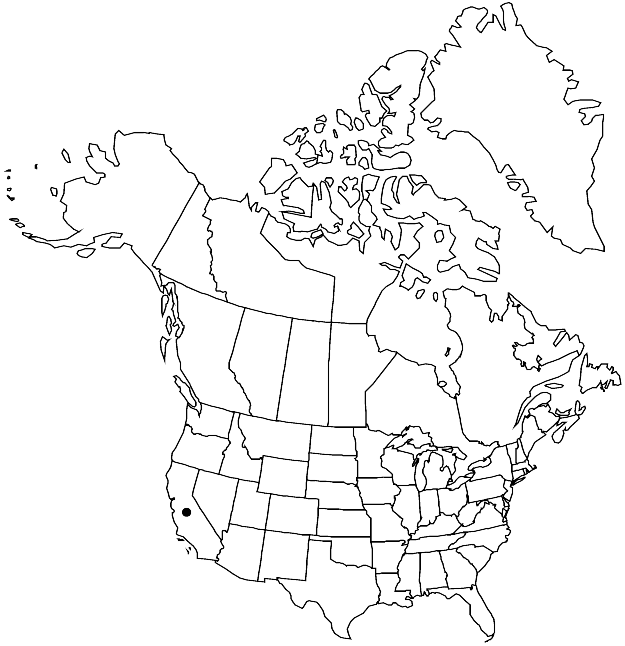Difference between revisions of "Streptanthus barbatus"
Proc. Amer. Acad. Arts 25: 125. 1890.
FNA>Volume Importer |
imported>Volume Importer |
||
| (5 intermediate revisions by 2 users not shown) | |||
| Line 6: | Line 6: | ||
|place=25: 125. 1890 | |place=25: 125. 1890 | ||
|year=1890 | |year=1890 | ||
| + | }} | ||
| + | |special_status={{Treatment/ID/Special_status | ||
| + | |code=F | ||
| + | |label=Illustrated | ||
| + | }}{{Treatment/ID/Special_status | ||
| + | |code=E | ||
| + | |label=Endemic | ||
}} | }} | ||
|basionyms= | |basionyms= | ||
| Line 11: | Line 18: | ||
|name=Cartiera barbata | |name=Cartiera barbata | ||
|authority=(S. Watson) Greene | |authority=(S. Watson) Greene | ||
| + | |rank=species | ||
}} | }} | ||
|hierarchy=Brassicaceae;Brassicaceae tribe Thelypodieae;Streptanthus;Streptanthus barbatus | |hierarchy=Brassicaceae;Brassicaceae tribe Thelypodieae;Streptanthus;Streptanthus barbatus | ||
| Line 35: | Line 43: | ||
-->{{#Taxon: | -->{{#Taxon: | ||
name=Streptanthus barbatus | name=Streptanthus barbatus | ||
| − | |||
|authority=S. Watson | |authority=S. Watson | ||
|rank=species | |rank=species | ||
| Line 49: | Line 56: | ||
|publication title=Proc. Amer. Acad. Arts | |publication title=Proc. Amer. Acad. Arts | ||
|publication year=1890 | |publication year=1890 | ||
| − | |special status= | + | |special status=Illustrated;Endemic |
| − | |source xml=https:// | + | |source xml=https://bitbucket.org/aafc-mbb/fna-data-curation/src/2e0870ddd59836b60bcf96646a41e87ea5a5943a/coarse_grained_fna_xml/V7/V7_1211.xml |
|tribe=Brassicaceae tribe Thelypodieae | |tribe=Brassicaceae tribe Thelypodieae | ||
|genus=Streptanthus | |genus=Streptanthus | ||
Latest revision as of 22:30, 5 November 2020
Perennials; (caudex branched); glabrous, (sepals and leaf blade apices pubescent). Stems (sometimes ascending), unbranched or branched (few), 1.5–8(–9.2) dm. Basal leaves subrosulate (in juvenile plants); shortly petiolate; blade obovate, 1–2.7 cm (5–14 mm wide), margins dentate apically (teeth with relatively short, bristly trichomes). Cauline leaves: blade (fleshy), broadly ovate to orbicular, 0.7–3.5 cm × 5–24 mm (not smaller distally), base auriculate to amplexicaul, (proximally overlapping, distally not overlapping), margins usually entire, (apex obtuse). Racemes ebracteate, (lax in fruit). Fruiting pedicels erect to ascending, (straight), 3–8 mm. Flowers: calyx campanulate; sepals (ascending), yellowish green (in bud) or purple (in flower), (ovate), 4–7 mm, not keeled, (apex with short, bristly, flattened trichomes); petals purplish (with darker veins), 5–9 mm, blade 0.5–3 × 0.3–0.7 mm, margins slightly crisped, claw 4–7 mm, wider than blade; stamens in 3 unequal pairs; filaments (distinct): abaxial pair 4–6 mm, lateral pair 3–5 mm, adaxial pair 5–7 mm; anthers (all) fertile, 2.5–3.5 mm; gynophore 1–3 mm. Fruits erect to ascending, smooth, often strongly recurved distally, distinctly flattened, 2–7(–8.2) cm × 2–3 mm; valves each with obscure midvein (sometimes not basally, margins somewhat thickened); replum straight; ovules 16–30 per ovary; style 0.4–1 mm; stigma entire. Seeds oblong to broadly ovoid, 3–4 × 1.7–2 mm; wing (0–)0.1–0.25 mm wide at apex, (narrower at margin). 2n = 28, 56.
Phenology: Flowering Jun–Aug.
Habitat: Dry, open Jeffrey pine woods, gravelly serpentine grounds in forest openings
Elevation: 800-2200 m
Discussion
Streptanthus barbatus is known from Siskiyou, Tehama, and Trinity counties.
Selected References
None.

